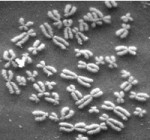…spiders.
There are lots of things with the “Runestone” moniker attached in my area: Runestone Telecom Association, Runestone Apartments, Runestone Mobile Home Park, etc., etc., and there’s a park called Kensington Rune Stone Park just 40 minutes away from me. I decided to take a trip out there.
That’s a rather nice building to honor a fake carved rock supposedly left by Vikings visiting Minnesota in the 14th century. It’s empty now, probably due mostly to the pandemic, but it’s not clear what they do there — it contains a big empty meeting space, perhaps for lectures about Vikings. The Olaf Ohman farmhouse is there and a big barn and some nicely maintained grassy grounds. The notorious Runestone itself is not there — it has a separate museum of its own in Alexandria, 20 minutes away. It’s all rather embarrassing.
But we didn’t care we were there for spiders. We found a few!




